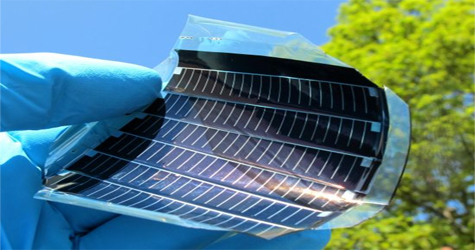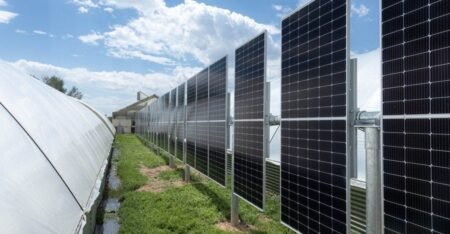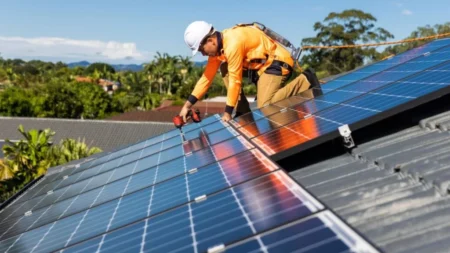Markets for thin film solar photovoltaic (PV) devices are growing rapidly, with a range of devices under development using different materials.
Analysis by the UK Energy Research Centre (UKERC) has found that the availability of materials needed for these devices is sufficient for short-term requirements. However, if markets for thin film grow in line with some energy scenarios in the next 20 years demand for materials used in some devices could greatly exceed current global production. Information on the future supply of indium and tellurium, key to some thin film designs, is currently inadequate and it is not possible to determine whether supply can expand to meet demand.
The study, by a team from UKERC based at Imperial College London, is published in a Working Paper, “Materials Availability: Potential constraints to the future low-carbon economy”. It assesses the demand and supply of indium and tellurium – secondary metals typically extracted with zinc and copper and used in some types of thin film PV modules. It is part of a wider UKERC research project into the scarcity of materials for advanced low-carbon technologies.
The global market for solar PV is growing very rapidly, and some energy scenarios suggest that it could contribute as much as 10-15% of global electricity by 2050. Thin film PV devices are expected to occupy a significant share (35-40%) of this market based on International Energy Agency scenarios – a market for thin films of perhaps 20 GW per year. Cadmium telluride (CdTe) and copper, indium, di-selenide (CIGS) devices are both contenders for a large share of the thin film market.
UKERC modelled material requirements under different assumptions about cell thickness, conversion efficiency and other key drivers of material usage – assumptions that differ widely in existing studies. If markets for CIGS or CdTe were to grow in line with IEA scenarios then demand could increase considerably. Demand for tellurium could rise by as much as 1800% relative to current global production. Indium production, also used in the manufacture of flat screen displays, might need to rise by 12 -170%.
“Can this demand be met? It is extremely hard to say.” said Jamie Speirs, who led the analysis. “Data on reserves and production of these metals are not accurate. We know that recovery rates could be increased, since at present we do not extract all of the indium and tellurium available in zinc and copper ores. We also know that recycling rates could be increased. How quickly these rates can be increased is uncertain. Unlike rare earths, new finds of which were recently reported in the sea-beds of the pacific, indium and tellurium extraction is currently interwoven with the availability and economics of copper, zinc and other metals.”
When the researchers reviewed previous work on demand for indium and tellurium they found a wide range of assumptions. There is also an absence of meaningful data on resources. As a result, estimates of production increases vary widely.
Speirs adds: “Resource estimates are not available and simplistic assumptions such as using current production or crustal abundance to estimate potential supply cannot provide any meaningful insight into future production. Considerable additional research is needed to better understand the availability of indium and tellurium relative to potential demand growth from the PV sector.
About UKERC
The UK Energy Research Centre carries out world-class research into sustainable future energy systems. It is the hub of UK energy research and the gateway between the UK and the international energy research communities. Our interdisciplinary, whole systems research informs UK policy development and research strategy.
About UKERC’s Technology and Policy Assessment (TPA) theme
The TPA was set up to inform decision-making processes and address key controversies in the energy field. It aims to provide authoritative and accessible reports that set very high standards for rigour and transparency.











